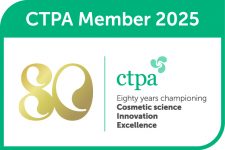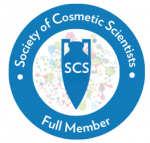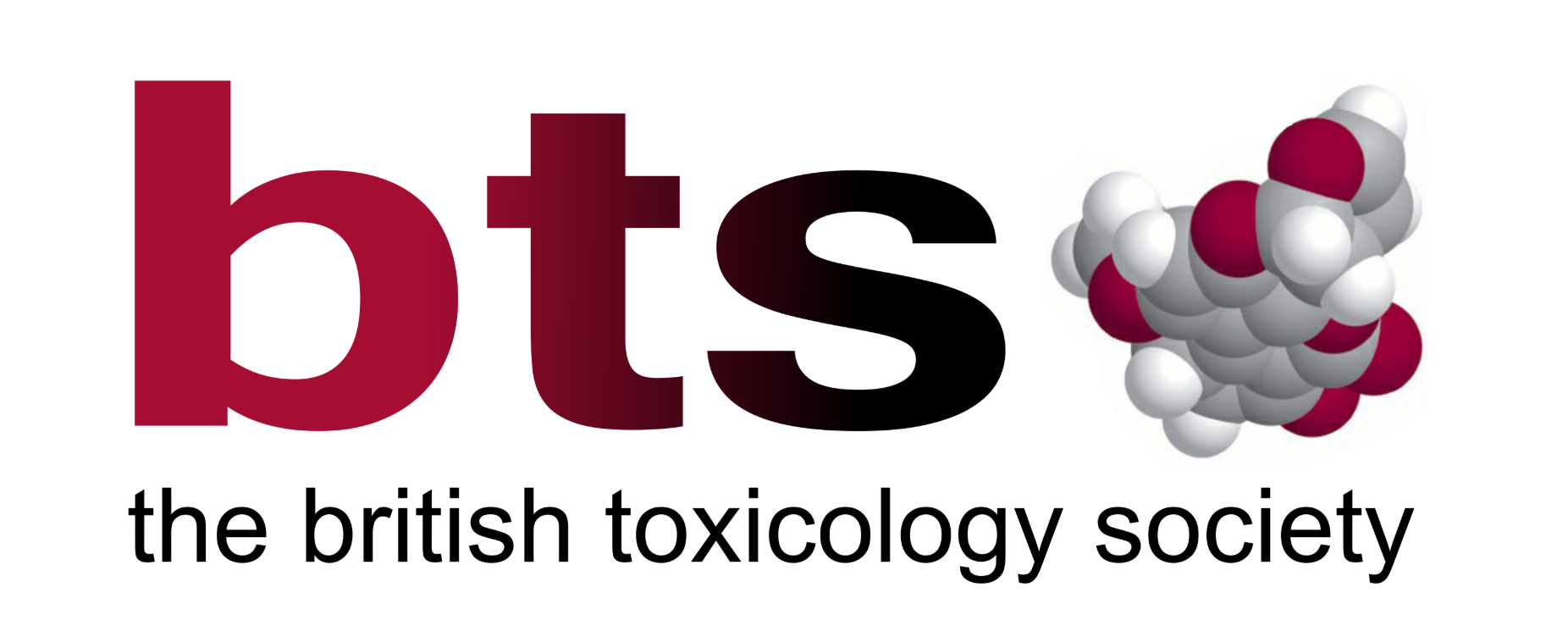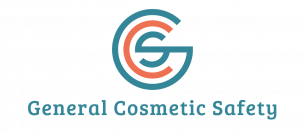Understanding Cosmetic Claims: What You Can and Can’t Say
Understanding Cosmetic Claims: What UK Brands Need to Know
If you’re selling cosmetic products in the UK, you’ve likely made a cosmetic claim without even realising it. Words like “natural”, “clean”, or “dermatologist approved” are common on product labels, websites and social media. But under UK law, these claims must follow strict rules.
In this blog, we’ll explain: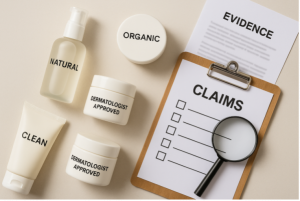
- What a cosmetic claim is
- Who regulates cosmetic claims in the UK
- The rules that apply
- Common claim types
- Risks on social media
- Tips for staying compliant
What Is a Cosmetic Claim?
A cosmetic claim is anything that tells the customer what the product does, what it contains, or why it is better than other products. This could be on:
- Packaging and labels
- Product websites
- Adverts (TV, print, online)
- Influencer posts or TikToks
- Blog articles or reviews
Even if it looks like education or a casual opinion, if it promotes your product, it can be classed as a claim.
Why Cosmetic Claims Are Regulated
In the UK and EU, cosmetic claims must follow the rules set out in Article 20 of EC 1223/2009 and Regulation (EU) No 655/2013. The goal is to make sure claims are:
- Not misleading
- Backed by evidence
- Clear and fair to consumers
This protects the customer from false promises and stops unfair competition between brands.
The Common Criteria
In the UK and EU, the Regulation outlines six common criteria:
- Legal – Must follow the law
- Truthful – Can’t exaggerate results
- Honest – Shouldn’t hide important facts
- Fair – Can’t unfairly compare to other products
- Evidence-based – You must hold proof
- Allow informed decisions – The claim must help consumers choose
You don’t need to submit evidence before making a claim, but you must have it ready if challenged.
What Does Substantiating a Claim Mean?
Substantiation means having adequate evidence to support the claims you make. This could include:
- Scientific literature: Peer-reviewed studies on ingredients.
- Consumer perception studies: Surveys or focus groups.
- Instrumental testing: Clinical trials, dermatological testing, or lab analysis.
- Historical use: Long-standing traditional use of ingredients (for certain types of claims).
The level of evidence required depends on the nature of the claim. A claim like “refreshes the skin” may need less rigorous substantiation than “clinically proven to reduce the appearance of wrinkles in 7 days.”
Types of Cosmetic Claims (and Their Risks)
Here are some of the most common claims found in the cosmetic market:
- Natural
There is no legal definition of “natural” in cosmetics. So you must clearly explain what you mean by it. Does it mean 95% natural origin ingredients? Or no synthetic fragrance?
- Organic
Unless you are certified by a recognised body like Soil Association or COSMOS, this can be risky. The ASA may consider it misleading if you don’t meet known organic standards.
- Free From
Claims like “free from parabens” or “free from sulphates” can cause confusion. The EU and UK have discouraged these unless there is a known safety concern or customer benefit. Saying “free from X” might also suggest that X is unsafe—even if that’s not true. Stating a product is “free from X” when it wouldn’t normally contain X is also seen as misleading and not permitted (e.g. saying “preservative-free” for an aerosol product).
- Clean
Like “natural”, “clean” has no legal definition. It’s often used in marketing to suggest purity or safety. But if it’s not clearly explained, it can mislead consumers.
- Hypoallergenic
To use this claim, your product must be formulated to reduce the risk of allergies—and you need strong evidence to back that up. This usually means specific testing and data.
- Dermatologist Approved
This claim should only be made if a qualified dermatologist has tested or reviewed the product. You must keep signed reports or statements as evidence.
Why These Claims Matter
Cosmetic claims are powerful. They’re shared widely—especially on social media—and influence what people buy. But there’s often a big gap between what customers think a claim means, and what it actually means.
For example, many shoppers believe “natural” means safer. But that’s not always true. Arsenic is natural.
Some brands use fear-based marketing—suggesting certain ingredients are harmful when they’re not. This creates confusion and mistrust. Once a false idea spreads, it’s very hard to correct, even with proper science.
Making unsubstantiated or misleading claims can lead to serious consequences:
Regulatory action: Authorities can demand product withdrawal, issue fines, or take legal action.
Reputational damage: Consumers are increasingly savvy and quick to call out false or exaggerated claims.
Loss of trust: Once trust is broken, it’s hard to rebuild—especially for small brands.
The Risks of Social Media and Influencer Content
Social media has made it easy to share and repeat claims—often without checking the facts.
Key issues to watch:
- Influencers may sound like experts, but they often aren’t.
- Some use fear or hype to gain views or sell products.
- It’s hard to tell what’s an advert or what’s personal opinion.
- “Off-label” advice (e.g. using a product in a different way than intended) is risky.
If something sounds too good to be true—it probably is.
Tips to stay safe: If it’s not designed for use on the lips or eyes—don’t use it there.
If it’s a rinse-off product—don’t use it as a leave-on product.
What This Means for You
If you’re a cosmetic brand owner, you need to:
- Check every marketing message
- Keep evidence for every claim
- Train your team or freelancers
- Be careful with influencer partnerships
As the Responsible Person, you are legally responsible for every claim linked to your product—even if someone else wrote it. Some safety assessors will help you with your claims and what is written on the pack. My company doesn’t offer this service because we believe it is a highly specialised area and there are claims experts that will do a better job and it isn’t a part of the safety assessment to support human health.
Practical Tips for Small Brands
- Start with your ingredients: Understand what each ingredient does and what claims are commonly associated with it. Use reputable sources like the EU CosIng database or published scientific literature.
- Be realistic and honest: Avoid overpromising. If your product contains a small amount of an active ingredient, don’t claim results that would require a much higher concentration.
- Document everything: Keep records of your substantiation—test results, studies, supplier documentation, etc. This is crucial if you’re ever asked to prove your claims.
- Work with professionals: Consider hiring a regulatory consultant or claims specialist to review your marketing materials. They can help ensure your claims are compliant and well-supported.
- Educate your team: If you have staff or collaborators, make sure they understand the importance of compliant claims. Everyone involved in marketing should be on the same page.
How I Can Help
I prepare Cosmetic Product Safety Reports (CPSRs) for UK brands and like to support my clients with additional content about the other aspects of the cosmetic regulation.
Final Thoughts
Cosmetic claims are more than just words. They are promises to your customer. Make sure yours are clear, honest and legal—and always backed by evidence.
Remember: your cosmetic safety assessor is your partner in ensuring product safety, but you are the expert on your brand’s voice and promises. By taking ownership of your claims and backing them with credible evidence, you not only protect your business—you elevate it.
If you’re ever in doubt, seek guidance. The investment in getting it right is far less than the cost of getting it wrong
Get in touch today if you need a CPSR for your product.
About the Author

Geraldine Garrs is a member of the Royal Society of Chemistry, CTPA, British Toxicology Society and the Society of Cosmetic Scientists. Geraldine is an independent Cosmetic Safety Assessor and Chartered Chemist with over nine years of experience helping more than 700 brands ensure their cosmetic products are safe and compliant. She specialises in preparing Cosmetic Product Safety Reports (CPSRs) for UK and EU. Geraldine is passionate about supporting small cosmetic businesses and simplifying complex regulations. Learn more at www.generalcosmeticsafety.co.uk
Get in Touch
If you’d like to discuss any of your products or ranges, please use the contact form here.
Qualifications: CChem (Royal Society of Chemistry). MSc (Distinction), University of Strathclyde, BSc (Hons) Chemistry, University of Nottingham and Certificate – Safety Assessment of Cosmetics in the EU, Vrije University Brussels
